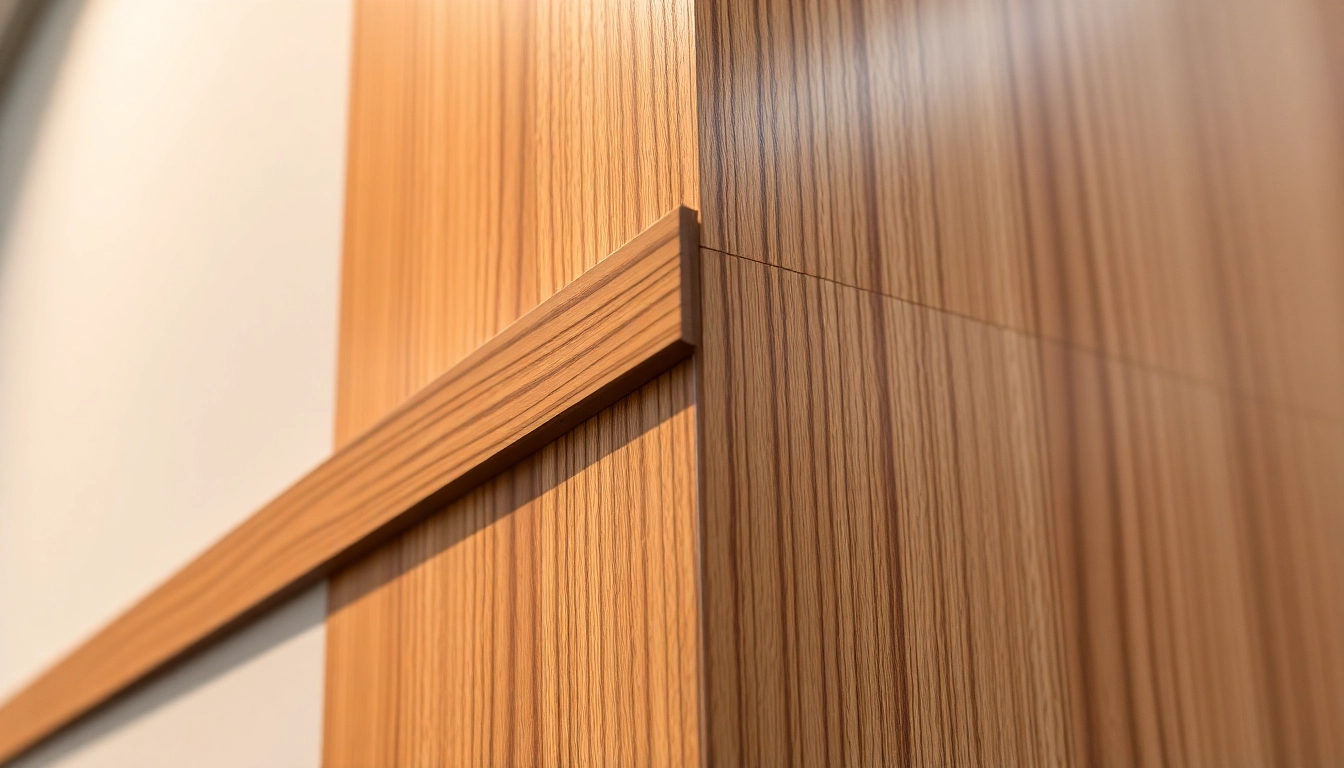Understanding Finish Trim: Styles, Materials, and Benefits
Finish trim is a fundamental component of interior design and finish carpentry, serving both functional and aesthetic purposes. It defines the transition between different surfaces—such as walls, ceilings, and flooring—and adds a polished, completed look to any space. Whether it’s baseboards, crown molding, or window casing, choosing the right finish trim involves understanding various styles, materials, and the benefits they bring to your home. For homeowners, contractors, and interior designers, having a deep insight into finish trim helps achieve a refined, cohesive interior that reflects personal style and enhances value.
In exploring the world of finish trim, it’s crucial to recognize the variety of options available and how each can influence a room’s ambiance. From traditional wooden moldings to modern composite trims, there are solutions suited for every interior theme and budget. For instance, a rustic farmhouse might benefit from reclaimed wood baseboards, while a contemporary space might opt for sleek MDF or PVC profiles. Furthermore, the material choice impacts durability, ease of installation, maintenance, and overall aesthetic—making it essential to tailor selections to specific project needs.
Popular Types of Finish Trim: Baseboards, Crown Molding, and Casing
When considering finish trim, the most common types include baseboards, crown molding, and door/window casings. Each serves a unique purpose and offers different stylistic opportunities:
- Baseboards: Installed at the junction of walls and flooring, baseboards conceal gaps, protect walls from scuffs, and provide a visual foundation for a room. They come in various heights and profiles—ranging from simple, minimalist designs to elaborate, decorative styles.
- Crown Molding: Positioned at the ceiling-wall junction, crown molding adds elegance and grandeur. It plays a vital role in defining the room’s style, whether traditional, modern, or transitional. Crown moldings can be simple or intricate, with optional details like dentil or egg-and-dart motifs.
- Casing: Used around doors and windows, casing frames openings and enhances architectural detail. It can be a simple square profile or a more ornate design to complement the overall decor.
Understanding the characteristics and purposes of these trim types enables precise selection based on both functionality and aesthetic intent.
Material Options: Wood, MDF, PVC, and Composite Trims
The diversity of materials available for finish trim allows for tailored solutions fitting different applications, budgets, and environmental conditions:
- Wood: The traditional choice, valued for its natural beauty, versatility, and ease of finishing. Common species include oak, pine, maple, and poplar. Wood trim can be stained, painted, or left natural, offering a warm, authentic look. Its susceptibility to moisture and potential warping in high-humidity areas are considerations.
- MDF (Medium Density Fiberboard): A cost-effective, smooth-surfaced engineered wood substitute. MDF trims are highly paintable and resist warping, making them ideal for painted finishes. However, they are less durable against moisture unless specially treated.
- PVC (Polyvinyl Chloride): A synthetic, moisture-resistant material perfect for bathrooms, kitchens, and exteriors. PVC trims are lightweight, easy to install, and require minimal maintenance but typically have a less refined appearance than wood.
- Composite Trims: Made from a blend of wood fibers and plastic, these trims combine durability, resistance to moisture and pests, and ease of installation. They come in various styles and are suitable for high-traffic areas and outdoor applications.
Selecting the right material involves balancing aesthetic preferences, environmental exposure, longevity, and budget constraints. A professional assessment can guide you toward options that meet your specific needs effectively.
Advantages of High-Quality Finish Trim in Home Aesthetics
Investing in high-quality finish trim yields numerous aesthetic and practical benefits:
- Enhanced Visual Appeal: Well-crafted and properly installed trim creates clean, crisp lines, framing architectural elements and elevating the overall design. High-quality trim can bridge stylistic gaps, providing elegance and cohesiveness.
- Increased Property Value: Attention to detail signified by refined trim work contributes to perceived quality, often translating into higher appraisal and marketability.
- Protection of Structural Elements: Baseboards protect walls from furniture scuffs and water damage, while casing conceals gaps and uneven edges around openings.
- Customization and Style Expression: Finish trim allows homeowners to express their style—be it modern minimalism, classic decor, or rustic charm—through profile choices and finishings.
Additionally, high-quality materials and installation reduce long-term maintenance costs, prevent issues like warping or cracking, and facilitate easy repainting or refinishing.
Design Considerations for Choosing the Right Finish Trim
Matching Finish Trim Styles with Interior Design Themes
One of the critical aspects of choosing finish trim is ensuring that its style complements the overall interior design theme. For example, traditional interiors often feature ornate crowns, intricate moldings, and rich wood finishes, emphasizing craftsmanship and historical accuracy. Modern interiors, on the other hand, favor clean lines, minimal profiles, and painted finishes that blend seamlessly with sleek furniture and open spaces.
To achieve harmony, consider the following:
- Style Compatibility: Match ornate moldings with traditional decor, and sleek, simple profiles with contemporary themes.
- Proportions: Larger moldings suit high ceilings and spacious rooms, while smaller profiles are fitting for cozy or low-ceilinged rooms.
- Material Consistency: Use the same material family for cohesive appearance, such as painted wood or MDF for unified color schemes.
Consulting interior design standards or working with a professional can help identify styles that best align with your vision.
Color and Finish Options to Enhance Room Features
The choice of color and finish on the trim significantly impacts room aesthetics. Traditional oak or cherry finishes evoke warmth and richness, while painted trims—white, black, or bold colors—add contrast and modern flair.
Some practical tips include:
- Color Coordination: Match the trim color to other architectural elements or contrast with wall colors for emphasis.
- Finish Sheen: Satin or semi-gloss finishes provide durability and a slight sheen that highlights profile details. Matte finishes offer a more subdued, sophisticated look.
- Accent and Highlight: Use contrast to draw attention—such as white trim on dark walls or darker tones against light backgrounds.
Applying a consistent finish across all trim elements ensures a cohesive appearance, while strategic contrast can highlight specific architectural features.
Proportions and Scale for Balanced Room Design
Proper proportions and scale are vital for achieving visual balance. Oversized trim in small rooms can overpower the space, while overly slim profiles in large rooms risk appearing insignificant.
Guidelines for scale include:
- Ceiling Height: Higher ceilings accommodate more substantial crown moldings, while lower ceilings benefit from simpler profiles.
- Room Dimensions: Larger rooms can handle bold, detailed trims, whereas smaller spaces benefit from minimal profiles to avoid clutter.
- Furniture and Decor: Balance the weight and detail of trim with the furniture style—elaborate trim pairs well with classic furniture, while sleek profiles complement modern decor.
Using visual references and measuring twice before installation reduces the risk of disproportionate selection and installation errors.
Step-by-Step Installation Tips for Professional Results
Measuring and Planning Your Finish Trim Layout
Meticulous planning is foundational to a successful finish trim installation. Start by measuring the perimeter of walls, door, and window openings, and determining the amount of trim required. Use precise tools like tape measures, square rulers, and level to mark straight lines and mount points.
Develop a detailed plan, including joint locations, miter angles, and layout sketches. Consider incorporating allowances for cuts and potential errors, typically around 5% extra trim material.
High-quality planning reduces waste, accelerates installation, and ensures a clean, professional appearance.
Cutting, Fitting, and Securing Techniques
Accurate cutting is essential. Use a fine-tooth saw or power miter saw for precise angled cuts. Always measure twice and cut once. For corners, miter cuts at 45°, but vary angles for internal or external corners.
Fitting involves dry-fitting pieces before securing. Use a glue and nail gun or finish nails for attachment. Employ a level and spacer blocks to ensure consistent height and alignment.
Seams should be tightly joined; use corner blocks or splines for better fitment if needed.
Consider acoustic or weatherproofing elements in the attachment process depending on location.
Finishing Touches: Sanding, Caulking, and Painting for a Flawless Look
After securing, sand all surfaces and joints to create a smooth, seamless finish. Use fine-grit sandpaper and a sanding block or power sander for efficiency.
Apply painter’s caulk along joints, seams, and nail holes. Smooth with a finger or caulking tool to blend gaps seamlessly.
Prime and paint or stain the trim as desired. Use high-quality brushes or rollers for even coverage. Multiple coats may be necessary for color depth and durability.
Careful finishing elevates the overall aesthetic, ensuring that trim looks professional and durable over time.
Best Practices for Achieving a High-Quality Finish
Choosing the Right Paints and Stains for Finish Trim
The finish quality heavily depends on your choice of paint and stain. For painted trim, opt for interior latex paints with high sheen options like semi-gloss or gloss, which are durable and easy to clean. For stained wood, use a quality wood stain followed by a clear topcoat or polyurethane for protection.
Red eye for paints like Benjamin Moore Aura Interior Latex, known for smooth application and lasting finish, or similar premium brands. Ensure compatibility with your trim material to prevent adhesion issues.
Tools and Techniques for Smooth, Clean Surfaces
Using the right tools enhances the finish quality. Invest in a high-quality brush set, foam rollers, or spray equipment for even coatings. For fine details, small brushes or artist brushes are effective.
Techniques include applying thin, even coats, allowing ample drying time, and sanding between coats for a smooth surface. Keep tools clean for the best results.
Common Mistakes to Avoid During Installation and Finishing
Errors that compromise the finish include improper measurements leading to gaps, rough cuts causing misalignment, hurried painting resulting in drips, and neglecting surface preparation. Avoid these pitfalls by thorough planning, precise measurement, and patience throughout the process.
Constantly inspecting work at each stage ensures issues are caught early and corrected, leading to professional-grade results.
Maintenance and Troubleshooting Common Finish Trim Issues
Cleaning and Regular Upkeep to Preserve Appearance
Regular dusting, gentle cleaning with mild soap and water, and prompt removal of scuffs or marks keep finish trim looking pristine. Avoid harsh abrasives or abrasive cleaners that can scratch surfaces or degrade paint.
Perform periodic inspections to identify and address minor issues before they escalate.
Repair Tips for Dents, Chips, and Gaps
Addressing damage involves filling minor dents or chips with wood filler or caulk. Sand smooth once dry, then repaint or refinish as needed. For larger gaps or damage, consider replacing sections or consulting a professional to ensure seamless repairs.
Proper sealing and finishing after repair maintain the high-quality appearance.
When to Replace or Upgrade Your Finish Trim
Signs indicating the need for replacement include persistent warping, extensive cracking, severe water damage, or outdated style that no longer complements your decor. Upgrading during renovations can increase home value and aesthetic appeal.
A professional assessment can help determine whether repair or replacement is the most cost-effective strategy.







